
Kibō, also known as the Japanese Experiment Module (JEM), is a Japanese science module for the International Space Station (ISS) developed by JAXA. It is the largest single ISS module, and is attached to the Harmony module. The first two pieces of the module were launched on Space Shuttle missions STS-123 and STS-124. The third and final components were launched on STS-127.
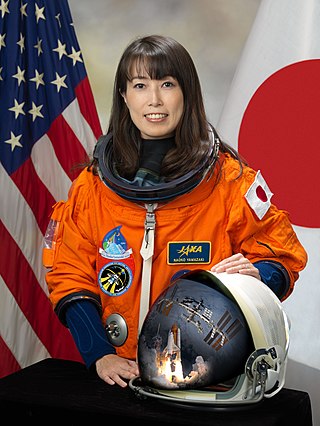
Naoko Yamazaki is a Japanese engineer and former astronaut at JAXA. She was the second Japanese woman to fly in space. The first was Chiaki Mukai.

A spaceplane is a vehicle that can fly and glide like an aircraft in Earth's atmosphere and maneuver like a spacecraft in outer space. To do so, spaceplanes must incorporate features of both aircraft and spacecraft. Orbital spaceplanes tend to be more similar to conventional spacecraft, while sub-orbital spaceplanes tend to be more similar to fixed-wing aircraft. All spaceplanes to date have been rocket-powered for takeoff and climb, but have then landed as unpowered gliders.

Koichi Wakata is a Japanese engineer and an astronaut working for Axiom Space. He retired from JAXA in 2024. Wakata is a veteran of four NASA Space Shuttle missions, a Russian Soyuz mission, and a long-duration stay on the International Space Station. During a nearly two-decade career in spaceflight, he has logged more than five hundred days in space. During Expedition 39, he became the first Japanese commander of the International Space Station. Wakata flew on the Soyuz TMA-11M/Expedition 38/Expedition 39 long duration spaceflight from 7 November 2013 to 13 May 2014. During this spaceflight he was accompanied by Kirobo, the first humanoid robot astronaut. As of 2023, he is the longest active astronaut in the world.
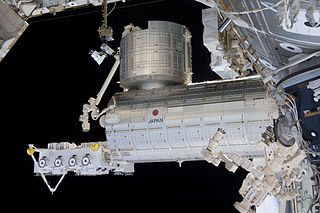
The National Space Development Agency of Japan, or NASDA, was a Japanese national space agency established on October 1, 1969 under the National Space Development Agency Law only for peaceful purposes. Based on the Space Development Program enacted by the Minister of Education, Culture, Sports, Science and Technology (MEXT), NASDA was responsible for developing satellites and launch vehicles as well as launching and tracking them.
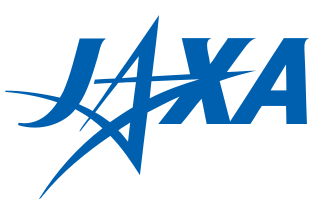
The Japan Aerospace Exploration Agency (JAXA) is the Japanese national air and space agency. Through the merger of three previously independent organizations, JAXA was formed on 1 October 2003. JAXA is responsible for research, technology development and launch of satellites into orbit, and is involved in many more advanced missions such as asteroid exploration and possible human exploration of the Moon. Its motto is One JAXA and its corporate slogan is Explore to Realize.

HOPE was a Japanese experimental spaceplane project designed by a partnership between NASDA and NAL, started in the 1980s. It was positioned for most of its lifetime as one of the main Japanese contributions to the International Space Station, the other being the Japanese Experiment Module. The project was eventually cancelled in 2003, by which point test flights of a sub-scale testbed had flown successfully.
The National Aerospace Laboratory of Japan (NAL), was established in July 1955. Originally known as the National Aeronautical Laboratory, it assumed its present name with the addition of the Aerospace Division in 1963. Since its establishment, it has pursued research on aircraft, rockets, and other aeronautical transportation systems, as well as peripheral technology. NAL was involved in the development of the autonomous ALFLEX aircraft and the cancelled HOPE-X spaceplane.

Fuji (ふじ) was a crewed space capsule proposed by Japan's National Space Development Agency (NASDA) Advanced mission Research center in December 2001. The Fuji design was ultimately not adopted.

Maspalomas Station is an INTA-operated, ESTRACK radio antenna ground station for communication with spacecraft located at the southern area of Gran Canaria island, on the INTA campus. It is situated on the Montaña Blanca hill and is visible from the coastal resort of Meloneras, close to Maspalomas. It was originally established in the 1960s to support NASA's nascent human spaceflight program.

Satoshi Furukawa is a Japanese surgeon and JAXA astronaut. Furukawa was assigned to the International Space Station as a flight engineer on long-duration missions Expedition 28/29 (2011) and Expedition 69/70 (2023-2024).

Akihiko Hoshide is a Japanese engineer, JAXA astronaut, and former commander of the International Space Station. On August 30, 2012, Hoshide became the third Japanese astronaut to walk in space.
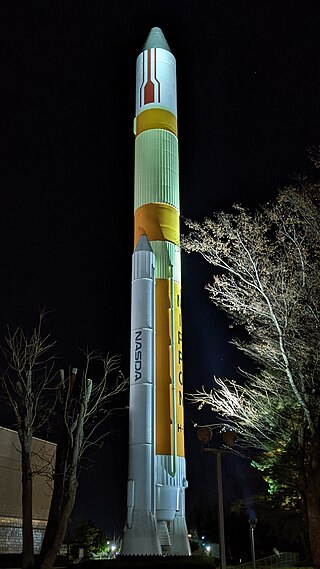
The H-II (H2) rocket was a Japanese satellite launch system, which flew seven times between 1994 and 1999, with five successes. It was developed by NASDA in order to give Japan a capability to launch larger satellites in the 1990s. It was the first two-stage liquid-fuelled rocket Japan made using only technologies developed domestically. It was superseded by the H-IIA rocket following reliability and cost issues.
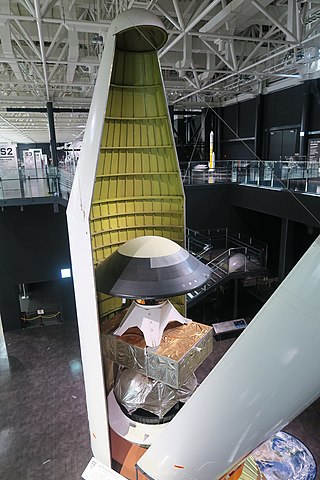
OREX was a NASDA re-entry demonstrator prototype which was launched in 1994 on the H-II launcher; the satellite was renamed Ryūsei. It was a precursor for the Japanese space shuttle HOPE.
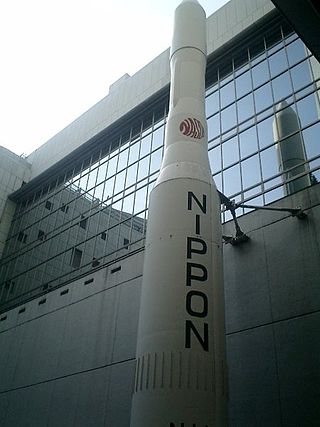
The N-I or N-1 was a derivative of the American Thor-Delta rocket, produced under license in Japan. The N stood for "Nippon" (Japan). It used a Long Tank Thor first stage, a Mitsubishi Heavy Industries-designed LE-3 engine on the second stage, and three Castor SRMs. Seven were launched between 1975 and 1982, before it was replaced by the N-II. Six of the seven launches were successful, however on the fifth flight, there was recontact between the satellite and the third stage, which caused the satellite to fail.
Marine Observation Satellite-1 (MOS-1), also known as Momo-1, was Japan's first Earth observation satellite. It was launched on 19 February 1987 on a N-II rocket from Tanegashima Space Center and was operated by the National Space Development Agency of Japan (NASDA). It is in a polar orbit at roughly 900 km altitude, but was decommissioned on 29 November 1995.

The Japanese space program originated in the mid-1950s as a research group led by Hideo Itokawa at the University of Tokyo. The size of the rockets produced gradually increased from under 30 cm (12 in) at the start of the project, to over 15 m (49 ft) by the mid-1960s. The aim of the original research project was to launch a man-made satellite.
SDS-4 is a small satellite developed by JAXA. It was launched as a secondary payload on the Shizuku mission on 17 May 2012 UTC.
Magnetic Bearing Flywheel Experimental System (MABES), also known as Jindai (じんだい) is a National Space Development Agency of Japan(NASDA) satellite mission. It conducted experiments on the levitation of the magnetic bearing flywheel in a zero-G environment, and tested the function of the launch lock mechanism.

CALLISTO is a reusable VTVL demonstrator propelled by a small 40 kN Japanese LOX-LH2 rocket engine. It is being developed jointly by the German Aerospace Center (DLR), the French Space Agency (CNES), and the Japanese Aerospace Exploration Agency (JAXA).
















